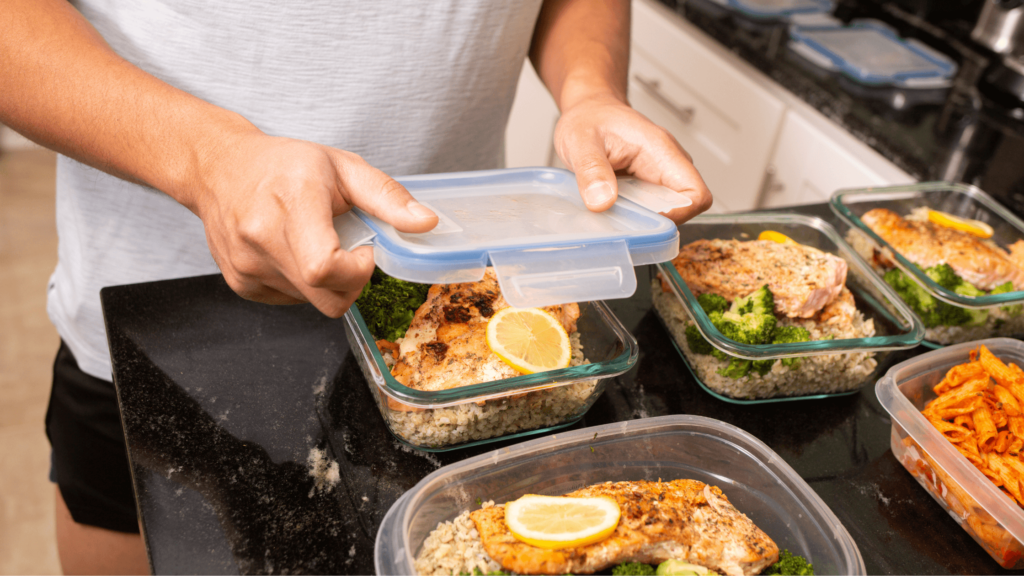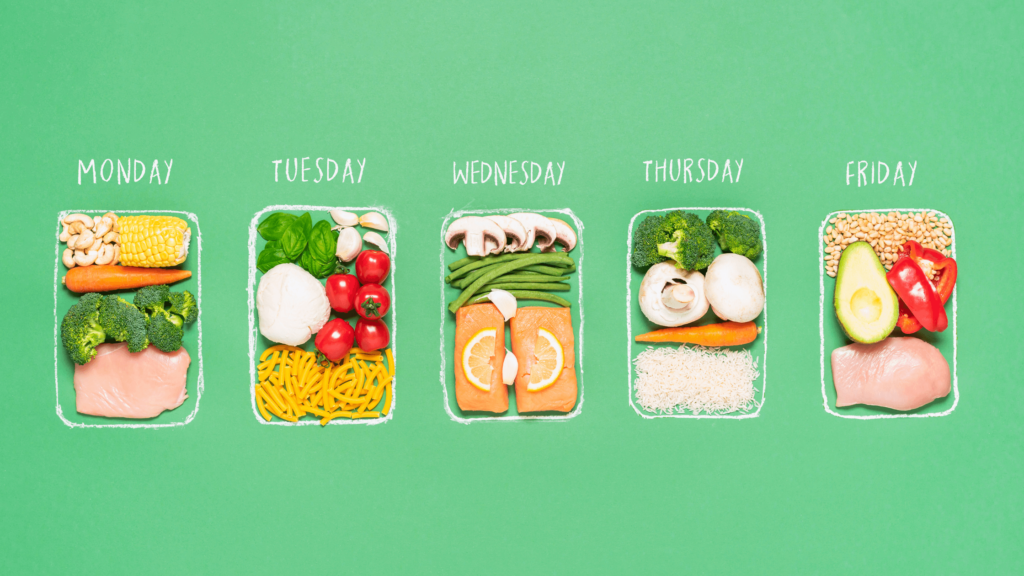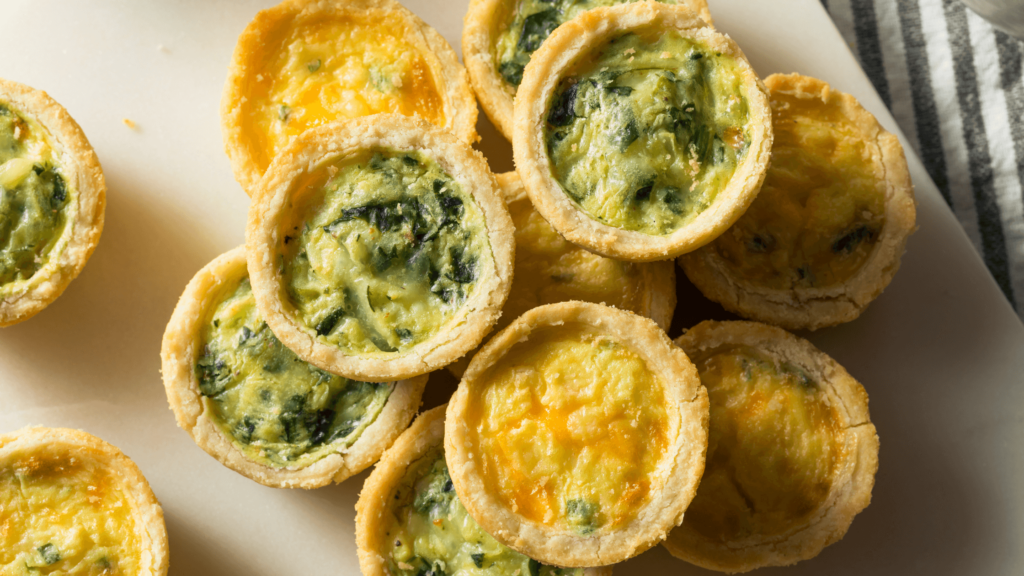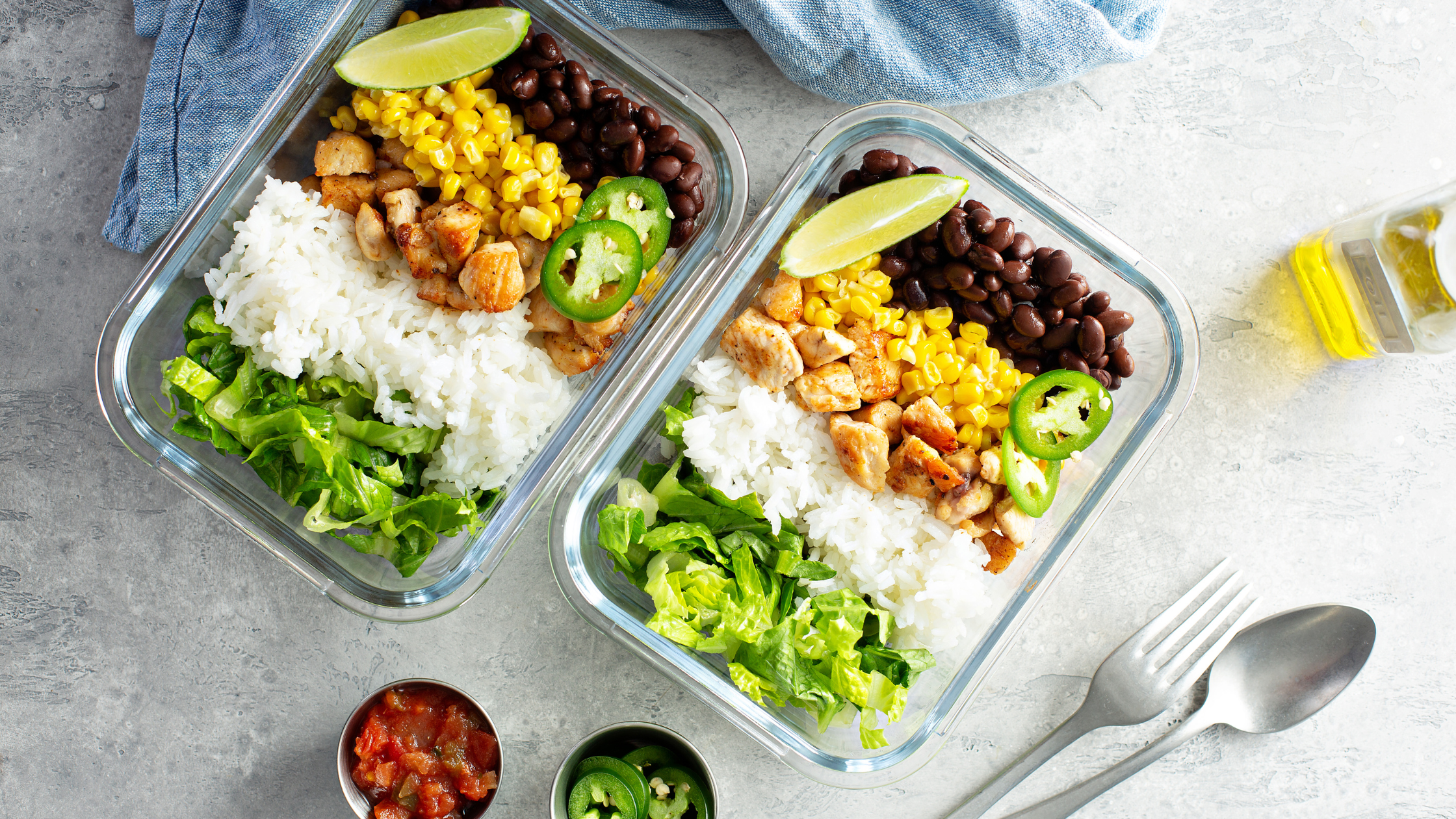Meal prep helps construction workers ensure nutrient needs are met to maintain energy, support good health, and improve work productivity. It is as simple as picking a few recipes, grocery shopping, cooking, and portioning your meals.
The basics of meal prep
Meal prepping is popular because it saves time. Having pre-prepared meals on hand reduces the likelihood of making poor food choices and ensures you’re eating—and eating healthy.
Construction workers aren’t known for their top-notch nutrition thanks to early starting hours, long days, and, often, working through breaks.
In most cases, workers don’t eat or grab something quick that can be scarfed down without thinking. Coffee trucks and fast food joints offer quick and easy food that offers energy and curbs hunger—at the expense of their health.
The alternative: Meal prep.
Meal prepping ensures you have healthy meals ready when you need them. Best of all, what you prep can be tailored to your situation.
If you don’t have time to sit down with a fork and knife, there are options. If you’re constantly on the move and won’t get a break, there are options, too. It’s about committing to the process (and your long-term health) and taking the time to execute.
Meal prepping is as simple as:
- Meal plan
- Grocery shop
- Ingredient prep
- Cook
- Portion
Although it might sound labor-intensive, taking a few hours on Sunday can make your workweek a bit more efficient (and tasty).
Meal prep options

Meal prepping is as individual as you—there are several ways to go about it, so choose the option that works best for you.
Some of the most popular ways to meal-prep include:
- Make-ahead meals: Full meals prepared and cooked in advance. These can be refrigerated or frozen and reheated for mealtimes. This is especially handy for dinners after a long workday.
- Batch cooking involves making large batches of specific foods or recipes and then splitting them into individual portions to be refrigerated or frozen. This method can be great for lunches on busy days.
- Individually portioned meals: Preparing fresh meals and portioning them into grab-and-go portions. Portioning meals is great for work lunches.
- Ready-to-cook ingredients: If you don’t want to cook food in advance, prepping ingredients can help reduce cooking time. This option isn’t suitable for lunches but is good for dinners.
The meal prep method that works best for you will depend on your individual circumstances and goals. Some people cook to relax, so prepping ingredients and cooking after work would be a suitable option.
If you want to streamline your morning, make-ahead breakfasts are a great option.
Key takeaway: There are several ways to meal prep, and the type you choose will depend on your goals, schedule, and meal preferences. Some popular options include batch cooking to freeze meals, individually portioning meals, and preparing make-ahead meals.
How to meal prep

If you’re used to grabbing lunch off the coffee truck or fasting through your workday, meal prepping might sound daunting—especially if you’re not a whiz in the kitchen. But meal prepping doesn’t have to be difficult or complicated.
When deciding what you want to meal prep, you can boil it down to a formula that will help simplify your options:
- Basic: Protein + carb + healthy fat + vegetable
- Low carb: Protein + healthy fat + vegetable + vegetable
- Vegetarian: Legume + grain/carb + healthy fat + vegetable
Once you’ve picked a formula, you can spice things up as you wish. Adding sauces, seasonings, and other flavor-boosters can take a bland meal to exciting without major calories.
What do you need?
Whether you’re a weekend meal prep warrior or a total newbie, here are some essentials you may want to consider:
- Glass containers with lids
- Reusable resealable bags
- Mason jars
- Kitchen shears (these are great for cutting poultry quickly!)
- Food scale
- Knives (and a good knife sharpener)
- Large-rimmed baking sheet
- Slow cooker
- Food processor
- Silicone muffin liners
A portable heated lunch box is also a great option. They’re relatively inexpensive and plug into a regular 120V wall outlet, making them ideal for heated meals on the go. Several brands, including Crock Pot, sell portable heated lunch boxes.
Meal prep ideas

Need some inspiration? Just type “meal prep ideas” into your internet browser search engine, and you’ll return thousands of meal ideas.
Here are a few to get you started for on-the-go breakfasts and lunches:
Breakfast
- Mini broccoli cheddar quiches
- Freezer-friendly breakfast burritos
- Veggie-packed, freezer-friendly breakfast sandwiches
- Mango coconut chia pudding
- Double chocolate overnight oats
- Protein shakes
- Green smoothies
- Pineapple protein smoothie
Lunch
- Ground turkey stir-fry
- Chicken and veggie meal prep
- Kale and white bean power bowls
- Poor man’s burrito bowls
- Kale chicken caesar wrap
- Greek chicken wraps
- Sriracha chickpea salad wrap
Hard-boiled eggs, nitrate-free (and clean) meat sticks, cheese, nuts and seeds, and fruits/vegetables can also make for easy, on-the-go snacks to curb hunger and sustain you if you can’t eat a full meal.
When searching for meal prep recipes, look for ones with a good amount of protein and healthy fat—a carb-heavy meal on the job will give you energy (eventually), but it’s likely to slow you down in the meantime. A protein + healthy fat meal offers sustenance and energy without needing a nap.
7 Steps for successful meal prep
Here’s our step-by-step guide to streamline your weekly meal prep:
- Select your meal prep method: You can meal prep using a single method or a combination of methods. Choose this based on your circumstances and goals.
- Stick to a schedule: Meal planning on a workday likely isn’t feasible, so pick a day on the weekend and commit to planning and prepping your meals for the week.
- Pick your meal number: If you’re out of the house early, you’ll probably want to plan for breakfasts and lunches on the go. Unless you’re working late, dinners can be done at home.
- Choose your recipes: Watch for variety and preparation methods. When starting, stick to a couple of simple recipes and repeat them throughout the week.
- Reduce grocery shopping time: Make a grocery list organized by grocery store departments or shop for groceries online.
- Batch cook to save kitchen time: Choose which meals to cook first based on their cooking times.
- Portion your meals: Once cool, portion your meals into appropriate containers. They can be refrigerated if you plan to eat within 3-4 days. If more than four days, pop them in the freezer (but be sure to thaw them the night before you need them!).
Like this and want more? Follow us on social media and subscribe to our weekly newsletter for the best insights into health and wellness in the construction space.



2 comments